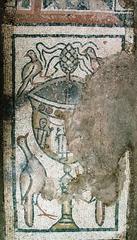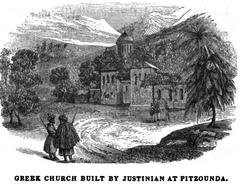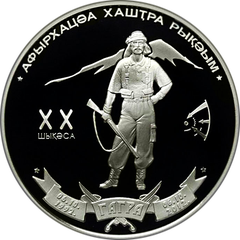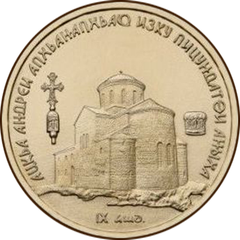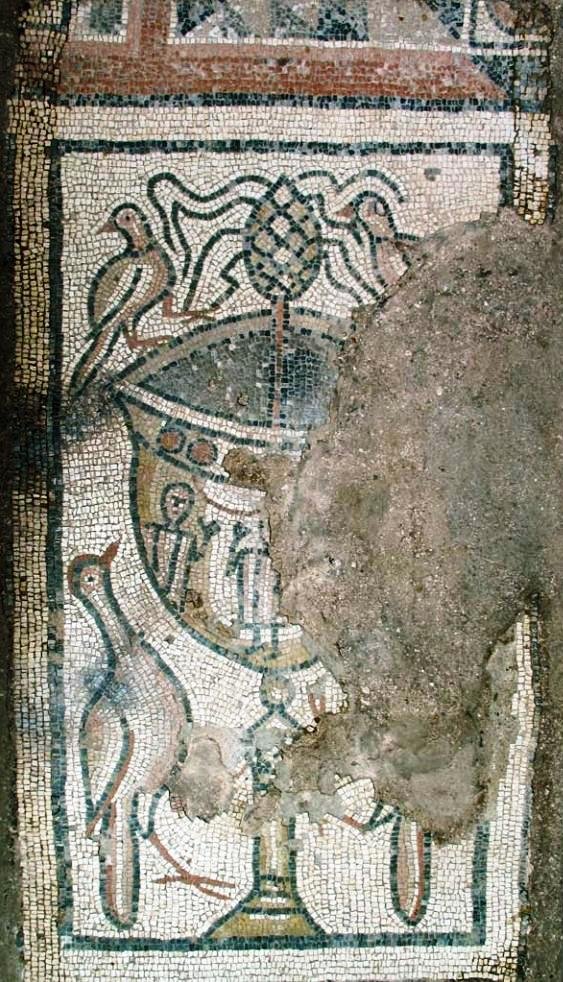
Pitsunda and Gagra Visiting Hours, Tickets, and Travel Guide for Abkhazia’s Historical Sites
Date: 14/06/2025
Introduction
Pitsunda and Gagra, two scenic towns on Abkhazia’s Black Sea coast, invite travelers to discover a unique mix of ancient history, natural beauty, and vibrant culture. Renowned for their Greek, Roman, Byzantine, and Soviet legacies, these destinations provide a captivating window into the region’s rich past and lively present. This guide presents essential information for visitors—including historical highlights, practical travel tips, visiting hours, ticket details, and advice to ensure a memorable and informed journey.
Whether you’re drawn to the majestic Pitsunda Cathedral, the evocative ruins of ancient Greek Pityus, the “Russian Riviera” ambiance of Gagra, or the tranquility of pine-scented beaches, this guide helps you plan a seamless and enriching visit. Considerations of Abkhazia’s political status, border requirements, and cultural etiquette are also included, along with recommendations for accommodation, transportation, and immersive local experiences (restgeo.com; discoverabkhazia.org; againstthecompass.com).
Geographical and Cultural Context
Location and Physical Features
Situated in northwestern Abkhazia—internationally recognized as part of Georgia but under de facto separate administration—Pitsunda and Gagra lie between the Black Sea and the Caucasus Mountains (georgia.travel). The coastline is approximately 195 km long, with Pitsunda located about 25 km southeast of Gagra (wikivoyage). Pitsunda occupies a cape surrounded by calm waters and a renowned relic pine grove (restgeo.com), while Gagra nestles between the sea and lush foothills, boasting subtropical vegetation (againstthecompass.com).
Climate
Both towns enjoy a humid subtropical climate, with summer temperatures averaging 24–28°C and mild winters rarely below 6°C. The endemic Pitsunda pine, Colchian boxwood, and subtropical fruit trees thrive here (restgeo.com; againstthecompass.com).
Historical and Cultural Overview
Ancient and Medieval Heritage
Pitsunda, known as Pityus in antiquity, was founded by Greek colonists in the 5th century BCE (wikipedia). It became a thriving political, trade, and religious center, with early basilicas and fortress walls still visible (restgeo.com). The town was significant in early Christian history, with traditions attributing visits to Apostles Andrew and Simon the Zealot (travellerspoint.com). The Great Pitiunt archaeological complex preserves ruins from multiple eras, and the 10th-century Patriarchal Cathedral of St. Andrew is among the region’s most important religious monuments (discoverabkhazia.org).
Gagra’s development spans the Colchis kingdom, Roman, Byzantine, and Ottoman periods, and its later transformation into a celebrated resort town (discoverabkhazia.org).
Soviet and Modern Influence
In the 19th and 20th centuries, the arrival of Russian imperial and Soviet administrators transformed Pitsunda and Gagra into premier resorts. Stalin and Khrushchev vacationed here, and the towns became popular destinations for Soviet elites, as reflected in the grand sanatoriums and hotels (restgeo.com). Soviet-era infrastructure and architecture remain prominent, particularly in Gagra, which gained fame as the “Russian Riviera” (discoverabkhazia.org).
Ethnic and Political Complexity
Abkhazia is home to Abkhazians, Georgians, Armenians, and Russians. Russian and Abkhaz are the main languages, with Georgian less common due to ongoing political tensions (academia.edu; georgia.travel). The complex blend of Orthodox Christian, Soviet, and local traditions is evident in religious practices, architecture, and daily life.
Natural and Cultural Attractions
Unique Flora, Fauna, and Landscapes
- Pitsunda-Miusera Nature Reserve: Protects the relic pine grove and diverse plant species, as well as rare birds and mammals (restgeo.com).
- Lake Inkit: A scenic, ancient lake near Pitsunda, surrounded by legends and ideal for nature walks (restgeo.com).
- Beaches: Both towns offer pebble beaches, clean waters, and opportunities for swimming, snorkeling, and dolphin watching (discoverabkhazia.org).
Architectural and Historical Sites
- Patriarchal Cathedral of St. Andrew (Pitsunda): Open daily 9:00–18:00, free entry. Features original frescoes and is a center for religious life (restgeo.com).
- Great Pitiunt Complex: Open 10:00–17:00, tickets ~200 RUB. Preserves Greek, Roman, and medieval remains (restgeo.com).
- Pitsunda Lighthouse: Late 19th-century maritime monument, open for external viewing (restgeo.com).
- Khetsuriani House-Museum: Open 10:00–16:00, tickets ~150 RUB. Highlights Abkhaz crafts (restgeo.com).
- Gagra Fortress: 4th–5th century ruins, open 9:00–18:00, entrance ~100 RUB. Offers panoramic views.
Soviet-Era and Modern Landmarks
- Abandoned Sanatoriums: Gagra’s grand Soviet-era resorts display neoclassical and Stalinist architecture. Guided tours are available.
- Gagra Colonnade: Iconic semi-circular arcade on Gagra’s central square, open at all hours and beautifully illuminated at night (Official tourism site).
Cultural Practices and Cuisine
Abkhaz culture is rooted in hospitality, traditional music, and dance. Summer festivals and markets offer local crafts, and cuisine features abysta (cornmeal porridge), smoked meats, seafood, and local wines such as Psou and Amra (discoverabkhazia.org).
Accessibility and Visitor Experience
Transportation and Infrastructure
- Getting There: The nearest major airport is Sochi (Adler), Russia. From there, cross the Psou checkpoint by bus or taxi (nashaplaneta.net). Marshrutkas and taxis connect to Gagra and Pitsunda. No direct international flights.
- Local Transport: Taxis are common; Pitsunda is walkable, while Gagra has some public transport. Ride-hailing apps are limited (satanayaknows.com).
Entry Requirements
- Russian citizens may enter via the Psou checkpoint with an internal passport. Foreign nationals require special permits and must enter via Inguri checkpoint from Georgia. Always verify current regulations.
Accommodation
Options range from Soviet-era hotels and sanatoriums to modern guesthouses. Advance booking is recommended during peak season.
Language
Russian is predominant; English is rarely spoken. Basic Russian phrases or translation tools are helpful.
Safety and Health
- Abkhazia’s subtropical climate can be hot and humid—use sun protection.
- Medical services are basic; comprehensive travel insurance is recommended.
- Petty theft occurs occasionally; keep valuables secure.
Main Attractions and Visitor Information
Gagra Highlights
- Colonnade and Central Square: Open all day, free. Wheelchair accessible.
- Seaside Promenade and Parks: Ideal for walking and cycling, open at all hours.
- Gagra Fortress: 9:00–18:00, ~100 RUB. Uneven terrain limits accessibility.
- Abandoned Sanatoriums: Guided tours available.
- Beaches: Free public access; well-equipped main beach and quieter stretches further north.
- Water Park: 10:00–20:00 (June–September), 300–700 RUB.
- Local Markets and Gastronomy: Try khachapuri, adjika-spiced meats, local cheeses, and wines.
Pitsunda Highlights
- Great Pitiunt Reserve: 9:00–19:00, 150 RUB adults/75 RUB children. Archaeological ruins and museum (historygreek.org).
- Pitsunda Cathedral: 8:00–18:00, free. Hosts organ concerts. Accessible entrance.
- Pine Grove and Beaches: Pristine, pine-scented beaches with health benefits.
- Boxwood Grove: Open year-round, free.
- Maritime Activities: Boat tours, fishing, dolphin watching, and a dolphinarium (10:00–18:00, ~500 RUB).
- Markets and Cuisine: Sample local honey, produce, and wines.
Practical Visitor Tips
- Bring cash in Russian rubles; card payments are limited.
- Comfortable walking shoes are essential for historic and nature sites.
- Modest dress is advised at religious sites; ask permission before photographing people.
- Internet access can be unreliable; local SIM cards are available.
Notable Nearby Attractions
- Lake Ritsa: Mountain lake near Gagra, open year-round, entrance ~200 RUB.
- Novy Afon Cave: Karst cave near Pitsunda, 9:00–17:00, ~300 RUB.
Frequently Asked Questions (FAQ)
Q: Do I need a visa to visit Pitsunda and Gagra?
A: Entry requirements depend on your nationality and current political situation; check with your embassy (georgia.travel).
Q: Are guided tours available?
A: Yes, local agencies offer tours of historical and natural sites.
Q: What languages are spoken?
A: Russian and Abkhaz; English is limited.
Q: Are the sites family-friendly?
A: Yes, especially beaches and parks.
Q: Is internet available?
A: Available in hotels and cafes; mobile coverage may be spotty.
Q: When is the best time to visit?
A: May–September for optimal weather.
Q: Is it safe to travel to Abkhazia?
A: Exercise caution due to political complexities and infrastructure; follow official travel advisories.
Conclusion and Call to Action
Pitsunda and Gagra stand as jewels of Abkhazia’s Black Sea coast, combining rich history, stunning nature, and enduring hospitality. With careful planning and cultural sensitivity, visitors can enjoy archaeological wonders, tranquil beaches, and authentic Abkhazian experiences. For up-to-date information, maps, and exclusive travel tips, download the Audiala app and follow our channels for the latest updates.
Plan your adventure to Abkhazia’s coastal gems and savor the hidden treasures of Pitsunda and Gagra!
Sources and Further Reading
- 10 Main Attractions of Pitsunda, 2024, RestGeo
- Discover Abkhazia: Visit, 2024, DiscoverAbkhazia.org
- Travel Abkhazia, 2024, AgainstTheCompass
- Abkhazia Region, 2024, Georgia.Travel
